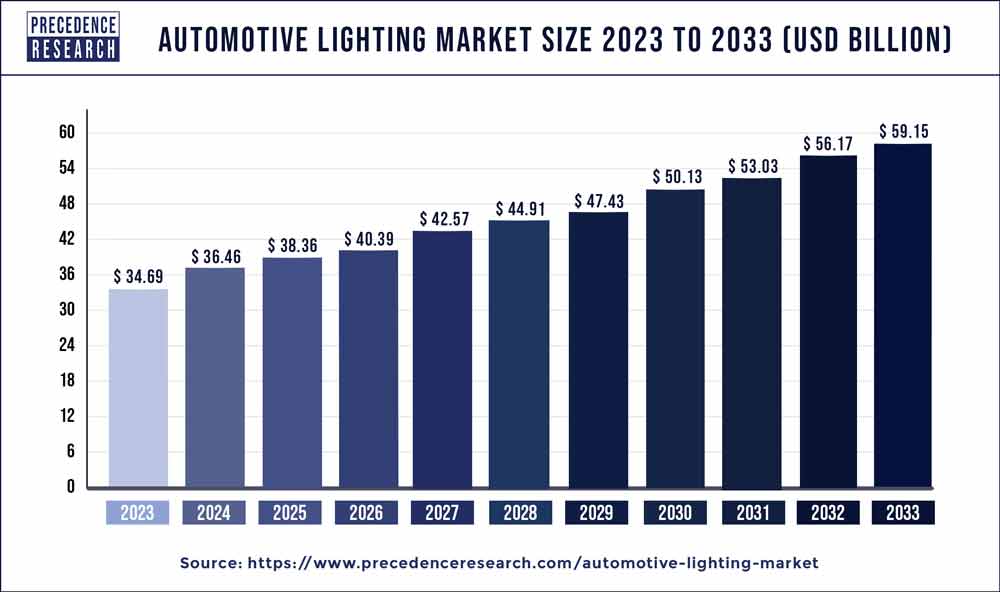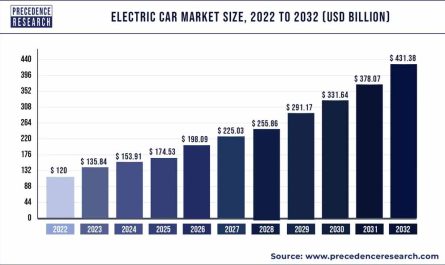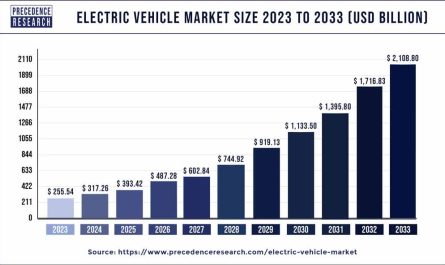The automotive lighting market was valued at US$ 34.69 billion in 2023 and is expected to surpass around US$ 56.17 Billion by 2032, with a CAGR of 5.50% from 2023 to 2032.

Key Takeaways
- Asia Pacific led the market with the biggest market share of 40% in 2022.
- By Technology, the halogen segment registered the maximum market share in 2022.
- By Technology, the Light Emitting Diode (LED) segment is expected to expand at the fastest CAGR over the projected period.
- By Application, the front/headlamps segment is expected to expand at the fastest CAGR over the projected period.
Lighting is a crucial element in an automobile that is used for providing illumination to the driver. Further, lighting also help pedestrians and other drivers on road to detect the position of the vehicle along with size and direct of the movement. It provides aesthetic look to both exterior and interior part of the vehicle and at the same time enhances the conspicuity. Automotive lighting comprises of signaling and lighting devices. They are mounted on the different parts and locations of the vehicle such as top, rear, front, and interiors. Conventionally, halogen technology was significantly used for the automotive lighting due to its easy availability and low cost. However, Xenon and LED were the most prominent lighting technology used in the automotive sector.
Get the Sample Pages of Report for More Understanding@ https://www.precedenceresearch.com/sample/1079
Growth Factors
Growing emphasis towards road safety along with stringent government norms regarding vehicle illumination are some of the most prominent factors that drives the market growth. Rising demand for adaptive and efficient lighting system to provide optimum illumination on-road significantly triggers the advancement in lighting technology. Proper vehicle lighting system can also prevent road accidents that occur due to visibility error in harsh environment. As per World Health Organization (WHO) report, an average 1.25 million people die every year due to road accidents. In addition, insufficient visibility was accounted as the prime factor for increasing number of road accidents worldwide. In the wake of same, governments of various regions have formulated effective regulations related to the application of lighting systems in an automobile. For instance, the European Union (EU) has mandated the implementation of Daytime Running Lights (DRL) in the region owing to unfavorable weather conditions. However, high installation cost of LED lights expected to restrict the market growth.
Automotive Lighting Market Scope
| Report Highlights | Details |
| Market Size by 2032 | USD 56.17 Billion |
| Growth Rate from 2023 to 2032 | CAGR of 5.50% |
| Largest Market | Asia Pacific |
| Fastest Growing Market | North America |
| Base Year | 2022 |
| Forecast Period | 2023 to 2032 |
| Segments Covered | Technology, Product, Vehicle, Application, Region |
| Companies Mentioned | Hella, Stanley Electrics, Hyundai Mobis, Valeo, ZizalaLichtsysteme, Philips, and General Electrics |
Report Highlights
- The Asia Pacific dominated the global automotive lighting market in 2019 and expected to exhibit the highest growth over the analysis period. This is mainly due to the high sales of passenger vehicles in the region. In addition, rising number of road accidents in the region are likely to boost the aftermarket sales of automotive lighting in the region.
- Europe anticipated witnessing steady growth in the coming years because of increasing adoption in the interior lights, reverse, brake, and signal indicators. Furthermore, environment regulations in the region mandate the deployment of LEDs for various applications.
- The front/headlamps application segment projected to register significant growth aspect during the forecast period. This is mainly because of rising advancement in the headlamps coupled with incorporation LED technology in the front view lighting sector.
- By vehicle type, electric vehicle anticipated to grow at a significant rate during the analysis period. Governments of various regions have taken significant initiatives for the adoption of electric vehicle to reduce the carbon footprint and improve the air quality are the major factors that propel the growth of the segment.
Regional Snapshots
The Asia Pacific is the most attractive region in the global automotive lighting market that accounted for maximum revenue share of around 40% in 2019 and also exhibits the rapid growth over the analysis period. The significant growth of the region is mainly due to increasing demand for passenger vehicles in the region. High disposable income along with prominent growth in Gross Domestic Product (GDP) of various Asian countries offers significant growth prospect for the passenger cars in the Asia Pacific region, thereby propelling the growth of automotive lights in the region. China, India, Taiwan, and Japan are the major manufacturing hubs for automotive sector, thus propel the growth of automotive lights production in the region.
Read Also: Automotive Lightweight Materials Market Size to Hit US$ 115.37 Bn by 2027
Key Players & Strategies
The global automotive lighting market is highly consolidated and competitive in nature. The major market share is occupied by the major market players including Hella, Stanley Electrics, Hyundai Mobis, Valeo, ZizalaLichtsysteme, Philips, and General Electrics. These industry participants believe significantly in joint venture, product launch, and regional expansion. For instance, Koito Manufacturing Co., Ltd. introduced its new manufacturing facility for automotive lights in China as Hubei Koito Automotive Lamp Co. Ltd. Further, they invest significantly in the research and development of advanced and effective lighting solution. Further, a market trend to invent a cost-effective LED solution and many other related solutions influence the market players to invest prominently in research & development activities.
Some of the conspicuous market contestants in the global automotive lighting market are as follows:
- DENSO Corporation
- HellaKGaAHueck& Co.
- Hyundai Mobis
- Valeo
- Koito Manufacturing Co. Ltd.
- OsramLicht AG
- Koninklijke Philips N.V.
- Stanley Electric Co. Ltd.
- ROBERT BOSCH GmbH
- ZizalaLichtsysteme GmbH
Segments Covered in the Report
By Technology
- LED
- Halogen
- Xenon/HID
By Product Sale
- Aftermarket Products
- Original Equipment Manufacturers (OEMs)
By Vehicle Type
- ICE
- Commercial Vehicle
- Passenger Vehicle
- Electric Vehicle
- Hybrid Electric Vehicle (HEV)
- Battery Electric Vehicle (BEV)
- Plug-in Hybrid Electric Vehicle (PHEV)
By Application
- Front/Headlamps
- Side
- Rear Lighting
- Interior Lighting
By Regional Outlook
- North America
- U.S.
- Canada
- Europe
- U.K.
- Germany
- France
- Asia Pacific
- China
- India
- Japan
- South Korea
- Rest of the World
TABLE OF CONTENT
Chapter 1. Introduction
1.1. Research Objective
1.2. Scope of the Study
1.3. Definition
Chapter 2. Research Methodology
2.1. Research Approach
2.2. Data Sources
2.3. Assumptions & Limitations
Chapter 3. Executive Summary
3.1. Market Snapshot
Chapter 4. Market Variables and Scope
4.1. Introduction
4.2. Market Classification and Scope
4.3. Industry Value Chain Analysis
4.3.1. Raw Material Procurement Analysis
4.3.2. Sales and Distribution Channel Analysis
4.3.3. Downstream Buyer Analysis
Chapter 5. Market Dynamics Analysis and Trends
5.1. Market Dynamics
5.1.1. Market Drivers
5.1.2. Market Restraints
5.1.3. Market Opportunities
5.2. Porter’s Five Forces Analysis
5.2.1. Bargaining power of suppliers
5.2.2. Bargaining power of buyers
5.2.3. Threat of substitute
5.2.4. Threat of new entrants
5.2.5. Degree of competition
Chapter 6. Competitive Landscape
6.1.1. Company Market Share/Positioning Analysis
6.1.2. Key Strategies Adopted by Players
6.1.3. Vendor Landscape
6.1.3.1. List of Suppliers
6.1.3.2. List of Buyers
Chapter 7. Global Automotive Lighting Market, By Technology
7.1. Automotive Lighting Market, by Technology Type, 2023-2032
7.1.1. LED
7.1.1.1. Market Revenue and Forecast (2020-2032)
7.1.2. Halogen
7.1.2.1. Market Revenue and Forecast (2020-2032)
7.1.3. Xenon/HID
7.1.3.1. Market Revenue and Forecast (2020-2032)
Chapter 8. Global Automotive Lighting Market, By Product Sale
8.1. Automotive Lighting Market, by Product Sale, 2023-2032
8.1.1. Aftermarket Products
8.1.1.1. Market Revenue and Forecast (2020-2032)
8.1.2. Original Equipment Manufacturers (OEMs)
8.1.2.1. Market Revenue and Forecast (2020-2032)
Chapter 9. Global Automotive Lighting Market, By Vehicle Type
9.1. Automotive Lighting Market, by Vehicle Type, 2023-2032
9.1.1. ICE (Commercial Vehicle, Passenger Vehicle)
9.1.1.1. Market Revenue and Forecast (2020-2032)
9.1.2. Electric Vehicle (Hybrid Electric Vehicle (HEV), Battery Electric Vehicle (BEV), Plug-in Hybrid Electric Vehicle (PHEV))
9.1.2.1. Market Revenue and Forecast (2020-2032)
Chapter 10. Global Automotive Lighting Market, By Application
10.1. Automotive Lighting Market, by Application, 2023-2032
10.1.1. Front/Headlamps
10.1.1.1. Market Revenue and Forecast (2020-2032)
10.1.2. Side
10.1.2.1. Market Revenue and Forecast (2020-2032)
10.1.3. Rear Lighting
10.1.3.1. Market Revenue and Forecast (2020-2032)
10.1.4. Interior Lighting
10.1.4.1. Market Revenue and Forecast (2020-2032)
Chapter 11. Global Automotive Lighting Market, Regional Estimates and Trend Forecast
11.1. North America
11.1.1. Market Revenue and Forecast, by Technology (2020-2032)
11.1.2. Market Revenue and Forecast, by Product Sale (2020-2032)
11.1.3. Market Revenue and Forecast, by Vehicle Type (2020-2032)
11.1.4. Market Revenue and Forecast, by Application (2020-2032)
11.1.5. U.S.
11.1.5.1. Market Revenue and Forecast, by Technology (2020-2032)
11.1.5.2. Market Revenue and Forecast, by Product Sale (2020-2032)
11.1.5.3. Market Revenue and Forecast, by Vehicle Type (2020-2032)
11.1.5.4. Market Revenue and Forecast, by Application (2020-2032)
11.1.6. Rest of North America
11.1.6.1. Market Revenue and Forecast, by Technology (2020-2032)
11.1.6.2. Market Revenue and Forecast, by Product Sale (2020-2032)
11.1.6.3. Market Revenue and Forecast, by Vehicle Type (2020-2032)
11.1.6.4. Market Revenue and Forecast, by Application (2020-2032)
11.2. Europe
11.2.1. Market Revenue and Forecast, by Technology (2020-2032)
11.2.2. Market Revenue and Forecast, by Product Sale (2020-2032)
11.2.3. Market Revenue and Forecast, by Vehicle Type (2020-2032)
11.2.4. Market Revenue and Forecast, by Application (2020-2032)
11.2.5. UK
11.2.5.1. Market Revenue and Forecast, by Technology (2020-2032)
11.2.5.2. Market Revenue and Forecast, by Product Sale (2020-2032)
11.2.5.3. Market Revenue and Forecast, by Vehicle Type (2020-2032)
11.2.5.4. Market Revenue and Forecast, by Application (2020-2032)
11.2.6. Germany
11.2.6.1. Market Revenue and Forecast, by Technology (2020-2032)
11.2.6.2. Market Revenue and Forecast, by Product Sale (2020-2032)
11.2.6.3. Market Revenue and Forecast, by Vehicle Type (2020-2032)
11.2.6.4. Market Revenue and Forecast, by Application (2020-2032)
11.2.7. France
11.2.7.1. Market Revenue and Forecast, by Technology (2020-2032)
11.2.7.2. Market Revenue and Forecast, by Product Sale (2020-2032)
11.2.7.3. Market Revenue and Forecast, by Vehicle Type (2020-2032)
11.2.7.4. Market Revenue and Forecast, by Application (2020-2032)
11.2.8. Rest of Europe
11.2.8.1. Market Revenue and Forecast, by Technology (2020-2032)
11.2.8.2. Market Revenue and Forecast, by Product Sale (2020-2032)
11.2.8.3. Market Revenue and Forecast, by Vehicle Type (2020-2032)
11.2.8.4. Market Revenue and Forecast, by Application (2020-2032)
11.3. APAC
11.3.1. Market Revenue and Forecast, by Technology (2020-2032)
11.3.2. Market Revenue and Forecast, by Product Sale (2020-2032)
11.3.3. Market Revenue and Forecast, by Vehicle Type (2020-2032)
11.3.4. Market Revenue and Forecast, by Application (2020-2032)
11.3.5. India
11.3.5.1. Market Revenue and Forecast, by Technology (2020-2032)
11.3.5.2. Market Revenue and Forecast, by Product Sale (2020-2032)
11.3.5.3. Market Revenue and Forecast, by Vehicle Type (2020-2032)
11.3.5.4. Market Revenue and Forecast, by Application (2020-2032)
11.3.6. China
11.3.6.1. Market Revenue and Forecast, by Technology (2020-2032)
11.3.6.2. Market Revenue and Forecast, by Product Sale (2020-2032)
11.3.6.3. Market Revenue and Forecast, by Vehicle Type (2020-2032)
11.3.6.4. Market Revenue and Forecast, by Application (2020-2032)
11.3.7. Japan
11.3.7.1. Market Revenue and Forecast, by Technology (2020-2032)
11.3.7.2. Market Revenue and Forecast, by Product Sale (2020-2032)
11.3.7.3. Market Revenue and Forecast, by Vehicle Type (2020-2032)
11.3.7.4. Market Revenue and Forecast, by Application (2020-2032)
11.3.8. Rest of APAC
11.3.8.1. Market Revenue and Forecast, by Technology (2020-2032)
11.3.8.2. Market Revenue and Forecast, by Product Sale (2020-2032)
11.3.8.3. Market Revenue and Forecast, by Vehicle Type (2020-2032)
11.3.8.4. Market Revenue and Forecast, by Application (2020-2032)
11.4. MEA
11.4.1. Market Revenue and Forecast, by Technology (2020-2032)
11.4.2. Market Revenue and Forecast, by Product Sale (2020-2032)
11.4.3. Market Revenue and Forecast, by Vehicle Type (2020-2032)
11.4.4. Market Revenue and Forecast, by Application (2020-2032)
11.4.5. GCC
11.4.5.1. Market Revenue and Forecast, by Technology (2020-2032)
11.4.5.2. Market Revenue and Forecast, by Product Sale (2020-2032)
11.4.5.3. Market Revenue and Forecast, by Vehicle Type (2020-2032)
11.4.5.4. Market Revenue and Forecast, by Application (2020-2032)
11.4.6. North Africa
11.4.6.1. Market Revenue and Forecast, by Technology (2020-2032)
11.4.6.2. Market Revenue and Forecast, by Product Sale (2020-2032)
11.4.6.3. Market Revenue and Forecast, by Vehicle Type (2020-2032)
11.4.6.4. Market Revenue and Forecast, by Application (2020-2032)
11.4.7. South Africa
11.4.7.1. Market Revenue and Forecast, by Technology (2020-2032)
11.4.7.2. Market Revenue and Forecast, by Product Sale (2020-2032)
11.4.7.3. Market Revenue and Forecast, by Vehicle Type (2020-2032)
11.4.7.4. Market Revenue and Forecast, by Application (2020-2032)
11.4.8. Rest of MEA
11.4.8.1. Market Revenue and Forecast, by Technology (2020-2032)
11.4.8.2. Market Revenue and Forecast, by Product Sale (2020-2032)
11.4.8.3. Market Revenue and Forecast, by Vehicle Type (2020-2032)
11.4.8.4. Market Revenue and Forecast, by Application (2020-2032)
11.5. Latin America
11.5.1. Market Revenue and Forecast, by Technology (2020-2032)
11.5.2. Market Revenue and Forecast, by Product Sale (2020-2032)
11.5.3. Market Revenue and Forecast, by Vehicle Type (2020-2032)
11.5.4. Market Revenue and Forecast, by Application (2020-2032)
11.5.5. Brazil
11.5.5.1. Market Revenue and Forecast, by Technology (2020-2032)
11.5.5.2. Market Revenue and Forecast, by Product Sale (2020-2032)
11.5.5.3. Market Revenue and Forecast, by Vehicle Type (2020-2032)
11.5.5.4. Market Revenue and Forecast, by Application (2020-2032)
11.5.6. Rest of LATAM
11.5.6.1. Market Revenue and Forecast, by Technology (2020-2032)
11.5.6.2. Market Revenue and Forecast, by Product Sale (2020-2032)
11.5.6.3. Market Revenue and Forecast, by Vehicle Type (2020-2032)
11.5.6.4. Market Revenue and Forecast, by Application (2020-2032)
Chapter 12. Company Profiles
12.1. DENSO Corporation
12.1.1. Company Overview
12.1.2. Product Offerings
12.1.3. Financial Performance
12.1.4. Recent Initiatives
12.2. HellaKGaAHueck& Co.
12.2.1. Company Overview
12.2.2. Product Offerings
12.2.3. Financial Performance
12.2.4. Recent Initiatives
12.3. Hyundai Mobis
12.3.1. Company Overview
12.3.2. Product Offerings
12.3.3. Financial Performance
12.3.4. Recent Initiatives
12.4. Valeo
12.4.1. Company Overview
12.4.2. Product Offerings
12.4.3. Financial Performance
12.4.4. Recent Initiatives
12.5. Koito Manufacturing Co. Ltd.
12.5.1. Company Overview
12.5.2. Product Offerings
12.5.3. Financial Performance
12.5.4. Recent Initiatives
12.6. OsramLicht AG
12.6.1. Company Overview
12.6.2. Product Offerings
12.6.3. Financial Performance
12.6.4. Recent Initiatives
12.7. Koninklijke Philips N.V.
12.7.1. Company Overview
12.7.2. Product Offerings
12.7.3. Financial Performance
12.7.4. Recent Initiatives
12.8. Stanley Electric Co. Ltd.
12.8.1. Company Overview
12.8.2. Product Offerings
12.8.3. Financial Performance
12.8.4. Recent Initiatives
12.9. ROBERT BOSCH GmbH
12.9.1. Company Overview
12.9.2. Product Offerings
12.9.3. Financial Performance
12.9.4. Recent Initiatives
12.10. ZizalaLichtsysteme GmbH
12.10.1. Company Overview
12.10.2. Product Offerings
12.10.3. Financial Performance
12.10.4. Recent Initiatives
Chapter 13. Research Methodology
13.1. Primary Research
13.2. Secondary Research
13.3. Assumptions
Chapter 14. Appendix
14.1. About Us
14.2. Glossary of Terms
Contact Us:
Mr. Alex
Sales Manager
Call: +1 9197 992 333
Email: sales@precedenceresearch.com
Web: https://www.precedenceresearch.com
Blog: https://www.expresswebwire.com/
Blog: https://www.uswebwire.com/
Blog: https://www.dailytechbulletin.com/
Blog: https://www.autoindustrybulletin.com/


